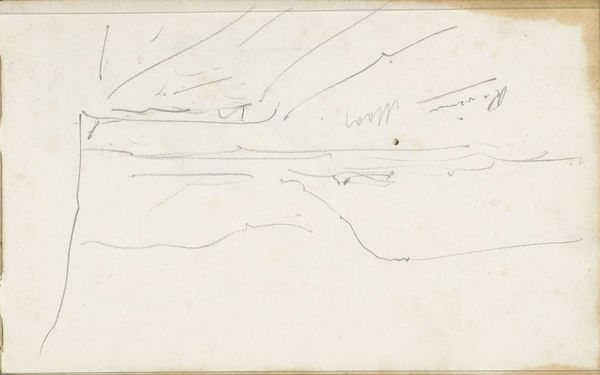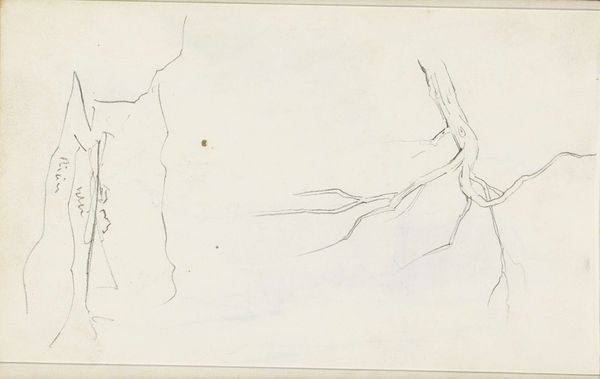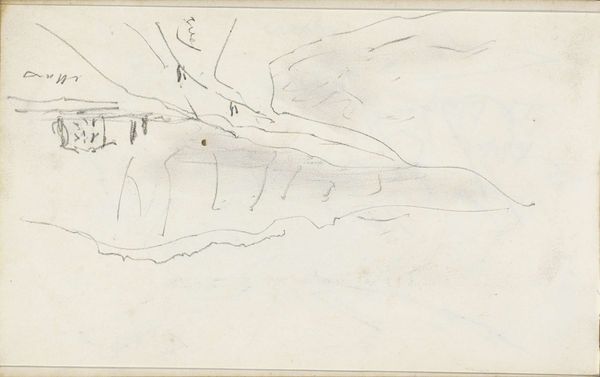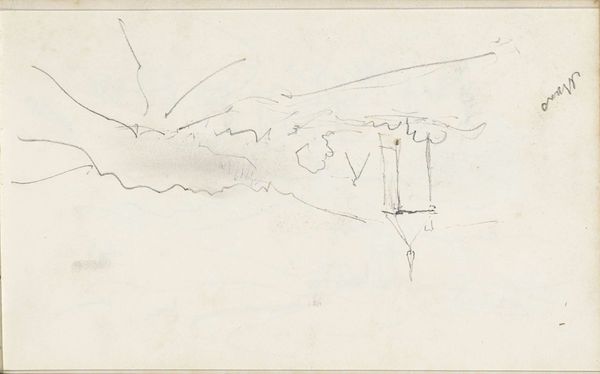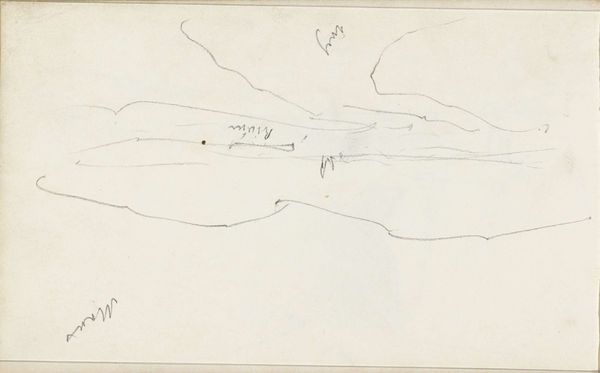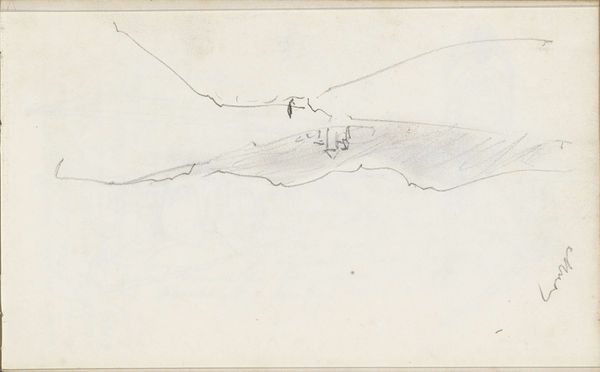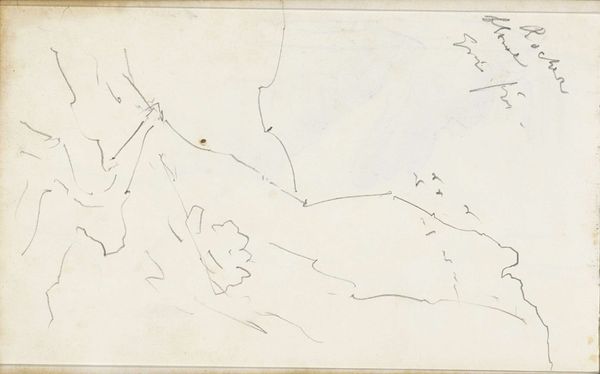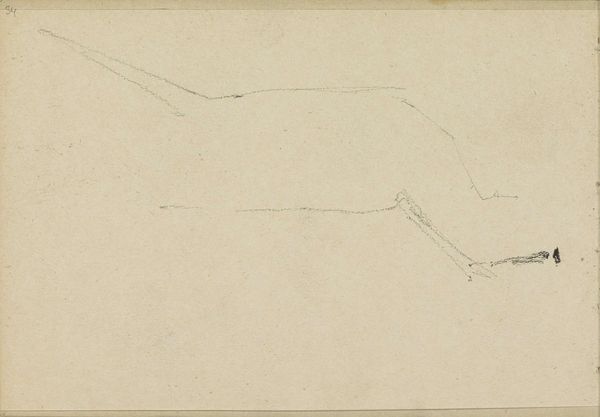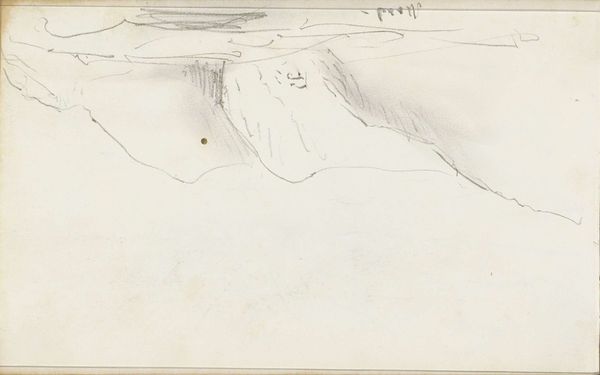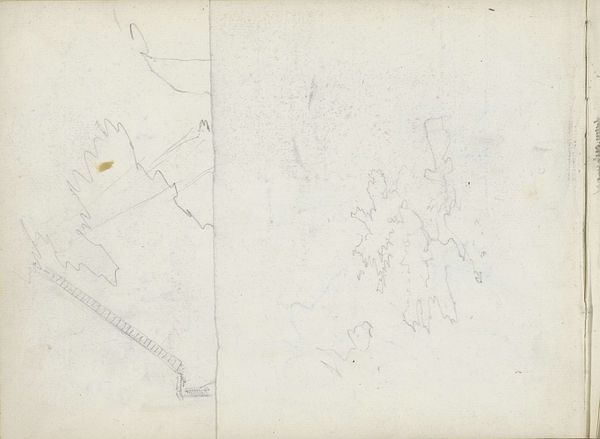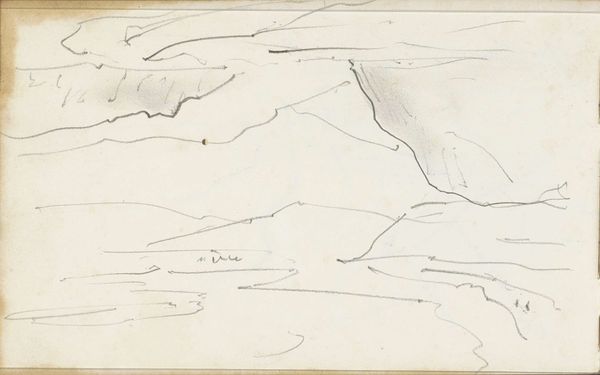
Pad in een heuvellandschap, vermoedelijk deel van de Route Impériale 1840 - 1841
0:00
0:00
johannestavenraat
Rijksmuseum
drawing, pencil
#
drawing
#
pencil sketch
#
landscape
#
road
#
romanticism
#
pencil
#
line
Copyright: Rijks Museum: Open Domain
Editor: Here we have Johannes Tavenraat’s pencil sketch, "Pad in een heuvellandschap, vermoedelijk deel van de Route Impériale," created around 1840. It has a rather ephemeral, fleeting quality, almost dreamlike. What catches your eye in this seemingly simple landscape sketch? Curator: For me, this drawing speaks volumes about the intersection of power, landscape, and identity in the 19th century. The "Route Impériale," presumably part of Napoleon's infrastructure projects, wasn't just a road; it was an assertion of imperial control, physically shaping the land to facilitate military and economic dominance. What does it mean to sketch this road? Is it an endorsement, a critique, or simply an observation? Editor: I hadn't thought about it in those terms. I was mostly focused on the lightness of the line work, and the Romantic style landscape. Curator: Exactly. And the Romantic style itself is crucial. Consider how Romanticism often idealized nature as a refuge from industrialization, a space of pure, untainted beauty. But here, the road cuts through that very landscape, suggesting a tension between the desire for untouched nature and the reality of human intervention, specifically, colonial intervention. Where does that place us as viewers? Editor: So you're saying the drawing isn't just a pretty landscape; it's subtly hinting at the complex relationship between nature, power, and perhaps even the loss of innocence or autonomy? Curator: Precisely! And think about who had access to these landscapes and who benefited from the road. Whose perspectives are privileged and whose are marginalized in this representation? Editor: That’s a lot to consider within this seemingly simple sketch! It really changes how I see the work, thinking about those historical forces. Curator: And hopefully encourages a more critical examination of landscape art generally, considering its relationship to colonialism and the politics of representation. Editor: Definitely. It has opened my eyes to questioning what I see at face value, which is valuable when viewing any artwork!
Comments
No comments
Be the first to comment and join the conversation on the ultimate creative platform.
